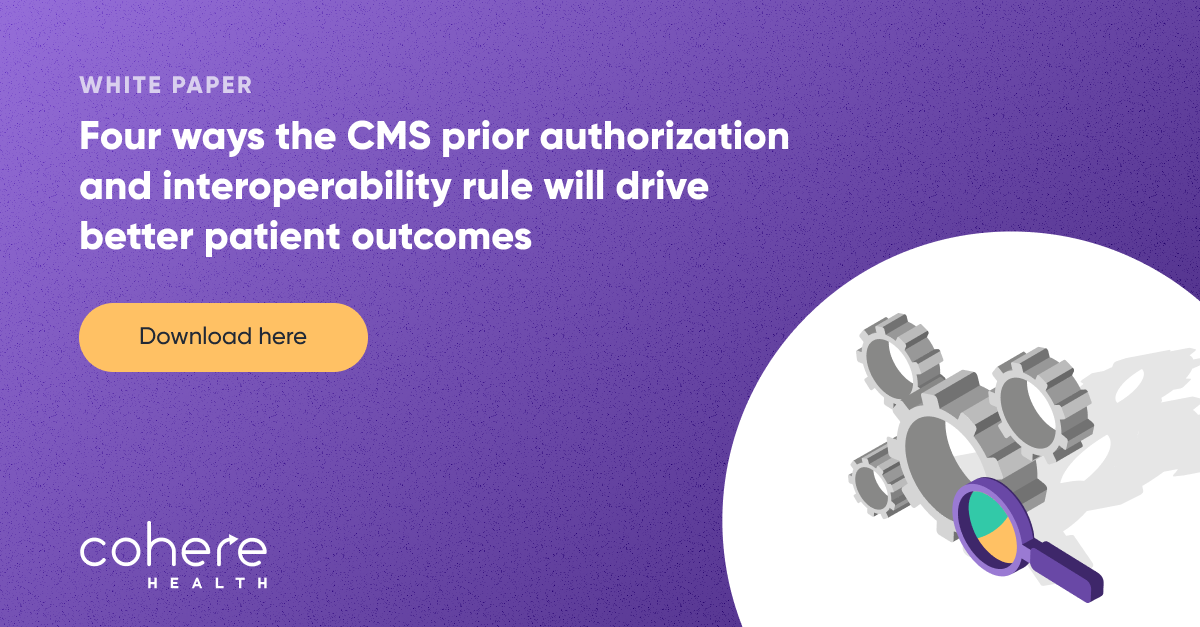The CMS Prior Authorization and Interoperability Rule provides new requirements to streamline and automate the historically burdensome prior authorization (PA) process, improving interoperability, transparency, and timely access to care.
Intelligent prior authorization helps plans:
- Digitize intake across all channels and improve interoperability
- Provide specific reasons for denials and enhance transparency
- Auto-decision majority of PA requests and facilitate timely access to care
Overall, CMS’s push for greater accountability in the PA process will help improve health plans and provider relationships–a win-win!
Read this white paper to learn how intelligent PA checks all the boxes for regulatory compliance.
Featured Content
Read how intelligent PA drives better health plan-provider collaboration, interoperability, transparency, and patient care.
News You Can Use
🧑⚖️ Legislators urge CMS to finalize prior authorization reforms—and go further (Fierce Healthcare)
A bipartisan group of 300+ legislators penned a letter urging CMS to finalize prior auth reform that would shorten care delays and lessen provider burden.
🤝 Majority of states have introduced prior authorization reforms (HealthLeaders)
A majority of states are taking action on prior auth, with bills that establish quicker response times, prohibit retroactive denials, and make authorizations valid for a set period of time.
💬 Report: Massachusetts should mandate prior auth automation (Healthcare Innovation)
NEHI and MHDC issued a report recommending that MA should take a leadership role in promoting the automation of prior auth.
Cohere Minute
🤖 How AI Can Soothe Burnout, Burden of Prior Authorization (MedCity Pivot Podcast)
AI and machine learning is streamlining the burdensome process of prior authorization.
👀 Two Provisions to Watch in the CMS Prior Authorization Rule (Regulatory 360 Series)
CMS is leveraging prior authorization transactions to improve interoperability.
⚙️ Generative AI to Propel Future of Healthcare IT (PitchBook)
Cohere’s approach “aligns care decisions between the payer and provider to fundamentally reduce friction rather than simply accelerating manual steps in the PA process.”
